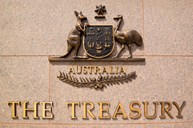The phenomenon of bracket-creep arises where static tax rates and thresholds gradually pull more people into higher tax brackets simply through the impact of rising wages and inflation.
Let's look at some numbers to show how bracket-creep can affect us all.
Say I'm on a salary of $112,000. In the 2024 year, my top marginal tax rate is 32.5%, which is the rate that applies up to $120,000. Let's say that the $120,000 threshold remains fixed but over the course of a few years, I enjoy an annual pay rise of 3% each year.
After receiving my pay rise in year three, I now earn more than $120,000 which means, if there is no change in tax rates, my top marginal tax rate is now 37%. But that higher tax rate only applies to my income over $120,000. So on that income only, I'm now paying tax at the second highest rate of 37% (the income below $120,000 is still taxed at the lower rates).
The argument is that this is unfair because I'm still doing the same job, I haven't received a promotion but because the government hasn't changed the tax rates or thresholds, I'm now paying tax at a higher rate on part of my income.
If nothing is done, the problem compounds over the years. Each year, my 3% pay rise takes my earnings further into the $120,000+ tax bracket, so an ever-increasing proportion of my income is taxed at the higher level.
How can bracket creep be stopped?
There are really two solutions:
- Index the thresholds by one of the measures of inflation so that they are automatically increased on an annual basis. That way, even though I get a pay rise every year, the thresholds also go up so in theory I should never move into the higher tax bracket (unless I get a promotion with a big salary increment to recognise my increased responsibility).
- Alternatively, cut the headline rates of income tax every few years so that the dollar amount of tax paid remains broadly the same for a given level of income, even though the thresholds themselves don't move.
Stages 1 and 2 of the tax cuts which commenced in July 2018 addressed this issue for low and middle income earners, by increasing the threshold of the first and second tax brackets. However, the threshold for the top tax bracket remained at $180,000.
The revised stage 3 tax cuts, which came into effect on 1 July 2024, increased the upper threshold of the second tax bracket from $120,000 to $135,000 and increased the threshold at which the top marginal tax rate of 45% applies from $180,000 to $190,000.
In addition, the lowest tax rate was reduced from 19% to 16% and the second tax bracket rate was reduced from 32.5% to 30%. This provided a tax break for all taxpayers with income over the tax free threshold. As part of the 2025-26 budget, the Government announced that the lowest tax rate will decrease to 15% from 1 July 2026 and to 14% from 1 July 2027. This will provide further tax breaks for all taxpayers with income over the tax free threshold.
Updated June 2025




.png?width=55&height=48&ext=.png)
-1.svg)

